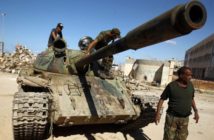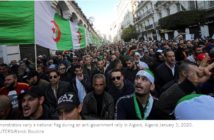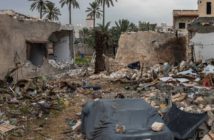The newly published proceedings of the international Media Dialogue 2012 include an essay by Eira Martens on the role of social media during the Egyptian revolution. Martens is a graduate of the IMS program.
Every year DW Akademie invites leading academics and media experts to the interdisciplinary Media Dialogue held in Bonn. The 2012 symposium focused on “The Arab World – The Role of Media in the Arab Spring’s Transformation Process”. The proceedings have now been published and include an essay by Eira Martens. She researched the role of social media during the upheavals in Egypt and says their role is often overstated.
Edition International Media Studies
You explored the role of social media in the Egyptian revolution. It is safe to say that Twitter and Facebook helped topple president Hosni Mubarak after he had been in power for 30 years?
Yes. My research results show that Twitter and Facebook played a significant role in mobilizing protesters, and particularly Facebook helped accelerate the process. Still, that doesn’t necessarily mean that the revolution would not have happened without these online platforms. Most of the social media activists I interviewed believed that it would have possibly taken just a few more years to overthrow the government. The virtual networks enabled the initially small protest movement to grow very quickly, especially in the year preceding the 18 day mass protests in January and February 2011. The Arab Social Media Report illustrates this growth exceptionally well.
How does your research differ from numerous other studies on the subject?
Over the past few years there’s been a great deal of hype around the role of social media in political transformation processes. Cyberoptimists and social media sceptics have for years been debating “Twitter revolutions” and “Facebook effects”, often in a very speculative way. In light of this I wanted to compile and analyze my own empirical data on the concrete roles social media platforms played in Egypt’s revolution. Previous studies indicate a need for studies on collective identity formation and organization mechanisms. I wanted to dig deeper and find out why and how people used social media to mobilize protesters in a country like Egypt.
What effect did social media have in Egypt in terms of forming a collective identity?
More than anything, photos and videos helped develop a collective identity, or more precisely, helped develop a form of solidarity. Images of police brutality and police assaults distributed on Facebook and other platforms such as YouTube and Flickr made people more willing to take to the streets and risk injury or even death. These images not only made people angrier but also lowered their threshold of fear. Overall, social media networks made people feel they were part of a bigger, collective protest movement. As a result, they dared to leave the online world and enter the offline world, to go out onto the streets and into public spaces.
The Egyptian protesters used numerous social media platforms but primarily Twitter and Facebook. Were these used in different ways?
It’s important to look at that because the technical aspect alone means that different platforms are used for different purposes. While Facebook was used for exchanging huge amounts of audiovisual content and creating networks and discussion groups, Twitter was primarily used for logistics. People on the streets could use Twitter to quickly exchange information about things that were happening at that moment.
That way, protesters could immediately react and evade attacks by security forces, for example, or bypass blockades. While the general population used Facebook, it was primarily committed activists who used Twitter within and outside Egypt.
Did the protest movement have leaders?
Opinions differ on this. Although the people I interviewed could be considered central figures in the movement they didn’t see themselves that way. If anything, they were modest and preferred to stay in the background. But the leadership aspect is a controversial one. Some believe that the protest movement – at least on the Internet – didn’t need leaders and that the egalitarian forms of organization and communication of Facebook groups are decisive characteristics of social media. Others believe that there were indeed “leadership figures” although they were often created and highly stylized by the mass media. My interview partners mentioned famous bloggers as well as famous writers including the Egyptian author Alaa Al-Aswani, who was also a spokesperson for the Kefaya movement.
How would you describe the relationship between social media and traditional media in Egypt?
The new and traditional media definitely interacted during the protests. Instead of creating their own content, traditional media, whether Egyptian or foreign, could fall back on user-generated – or protester-generated – content. At the same time, the impact of social media relied on television and newspapers because many people had no or little access to the Internet. There was a five-day Internet blackout during the protests and its impact can be interpreted in two ways. On the one hand, protesters continued to go out on the streets regardless; on the other hand, many believe that the social media blackout enraged people to the extent that they went out and protested in ever-increasing numbers.
Eira Martens is a recent graduate of DW Akademie’s International Media Studies master’s program. After completing her degree in Social and Economic Sciences Martens worked for various NGOs and media organizations in Germany, Australia, South East Asia and Latin America. Martens is currently a DW Akademie research assistant and continues to contribute to academic research relating to the field of media development.









